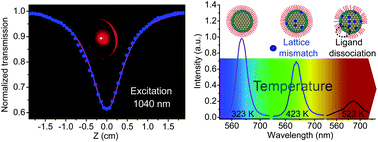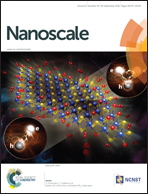Colloidal quantum-dot-based silica gel glass: two-photon absorption, emission, and quenching mechanism†
Abstract
Two-photon (TP) three-dimensional solid matrices have potential applications in high density optical data reading and storage, infrared-pumped visible displays, lasers, etc. Such technologies will benefit greatly from the advantageous properties of TP materials including tunable emission wavelength, photostability, and simple chemical processing. Here, this ideal TP solid is made possible by using a facile sol–gel process to engineer colloid quantum dots into silica gel glass. Characterization using an open-aperture Z-scan technique shows that the solid matrices exhibited significant TP optical properties with a TP absorption coefficient of (9.41 ± 0.39) × 10−2 cm GW−1 and a third-order nonlinear figure of merit of (7.30 ± 0.30) × 10−14 esu cm. In addition, the dependence of the TP properties on high-temperature thermal treatment is studied in detail to obtain a clear insight for practical applications. The results illustrate that the sample can maintain stable TP performance below the synthesis temperature of the CdTe/CdS colloidal quantum dots. Furthermore, the mechanisms for thermal quenching of photoluminescence under different temperature regimes are clarified as a function of the composition.


 Please wait while we load your content...
Please wait while we load your content...